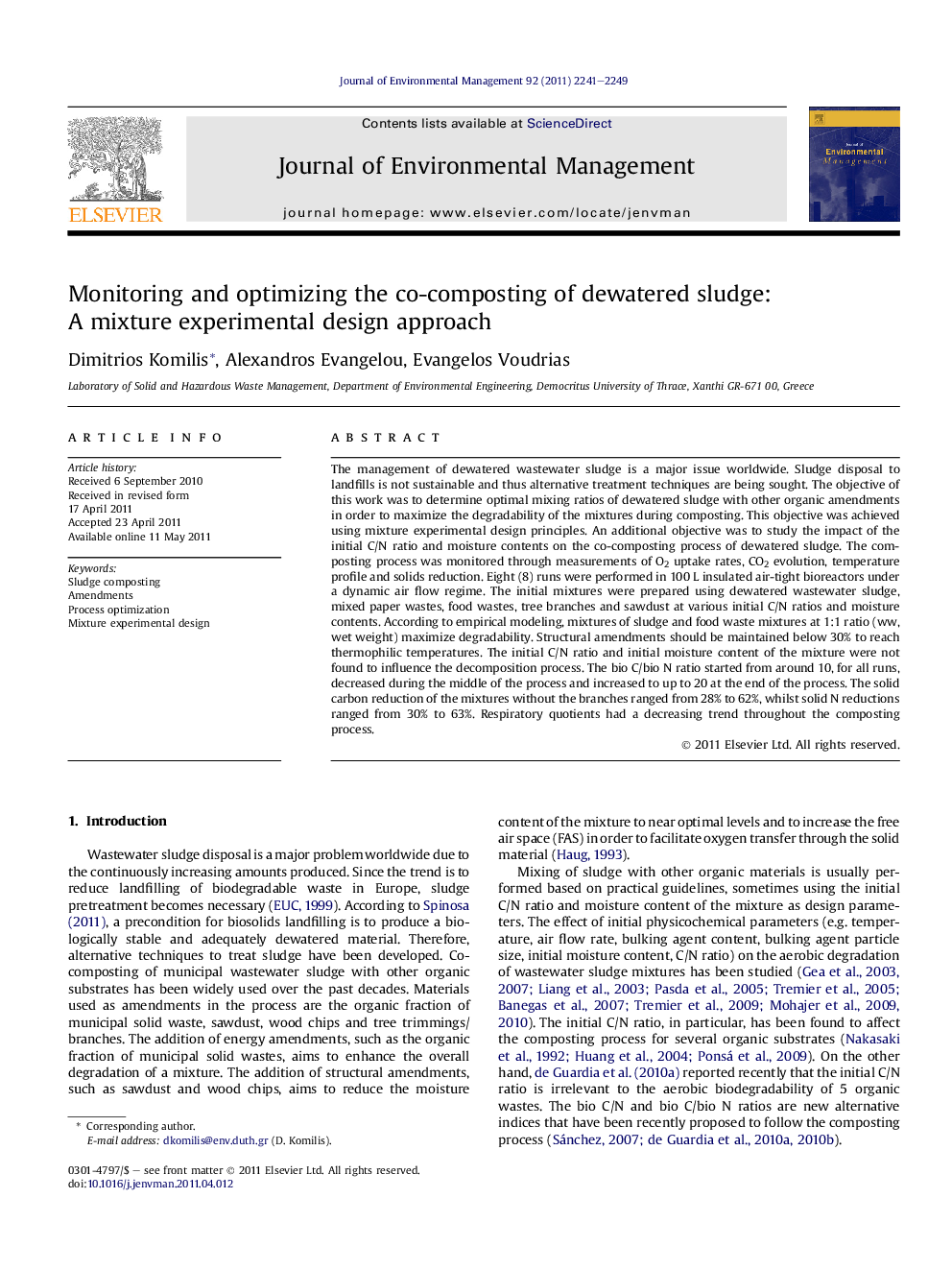| Article ID | Journal | Published Year | Pages | File Type |
|---|---|---|---|---|
| 1057009 | Journal of Environmental Management | 2011 | 9 Pages |
The management of dewatered wastewater sludge is a major issue worldwide. Sludge disposal to landfills is not sustainable and thus alternative treatment techniques are being sought. The objective of this work was to determine optimal mixing ratios of dewatered sludge with other organic amendments in order to maximize the degradability of the mixtures during composting. This objective was achieved using mixture experimental design principles. An additional objective was to study the impact of the initial C/N ratio and moisture contents on the co-composting process of dewatered sludge. The composting process was monitored through measurements of O2 uptake rates, CO2 evolution, temperature profile and solids reduction. Eight (8) runs were performed in 100 L insulated air-tight bioreactors under a dynamic air flow regime. The initial mixtures were prepared using dewatered wastewater sludge, mixed paper wastes, food wastes, tree branches and sawdust at various initial C/N ratios and moisture contents. According to empirical modeling, mixtures of sludge and food waste mixtures at 1:1 ratio (ww, wet weight) maximize degradability. Structural amendments should be maintained below 30% to reach thermophilic temperatures. The initial C/N ratio and initial moisture content of the mixture were not found to influence the decomposition process. The bio C/bio N ratio started from around 10, for all runs, decreased during the middle of the process and increased to up to 20 at the end of the process. The solid carbon reduction of the mixtures without the branches ranged from 28% to 62%, whilst solid N reductions ranged from 30% to 63%. Respiratory quotients had a decreasing trend throughout the composting process.
► We monitored the co-composting of sludge with amendments and organic solid wastes. ► A mixture experimental design approach was used and response surfaces were drawn. ► Sludge and food waste mixtures at a 1:1 ratio (ww) maximized degradability. ► The initial moisture and initial C/N ratio did not affect the composting process. ► The bio C/bio N ratio and the respiratory quotients were illustrated versus time.
